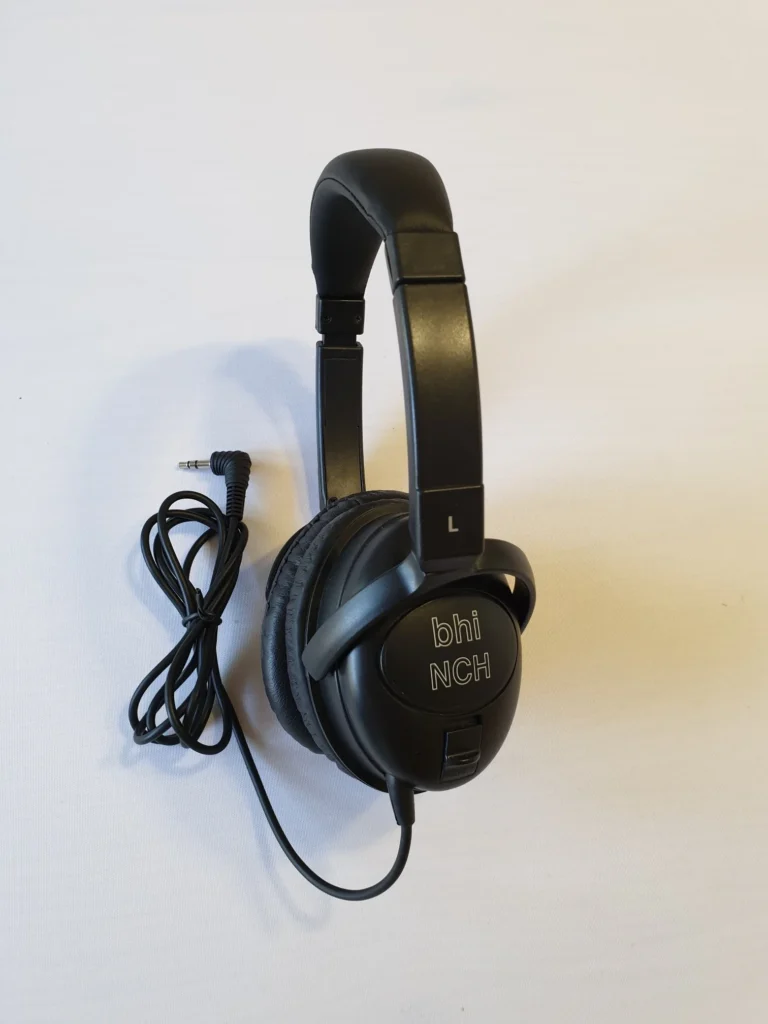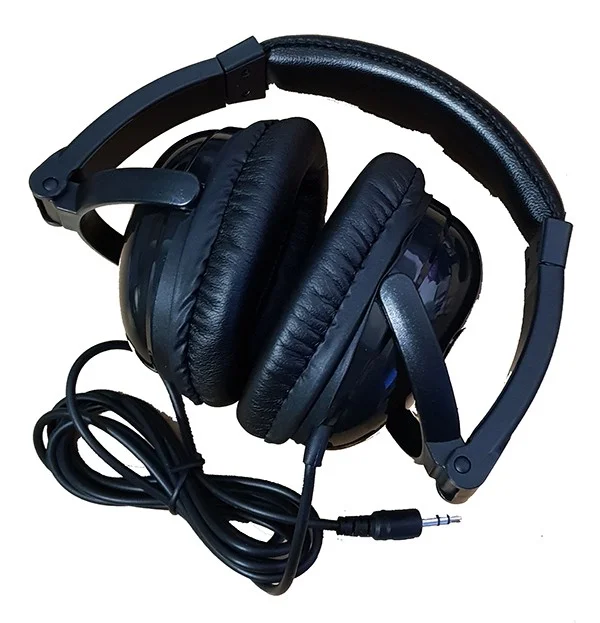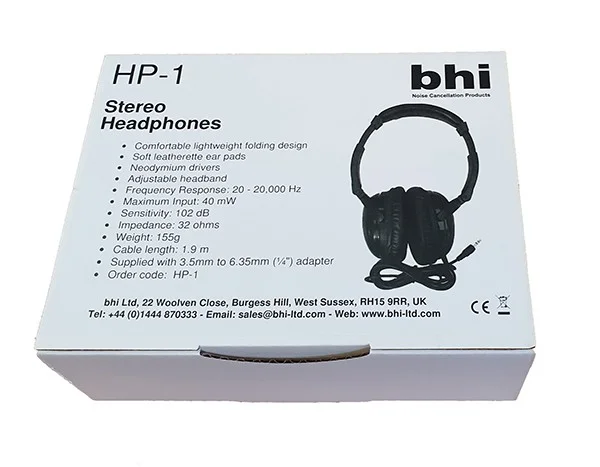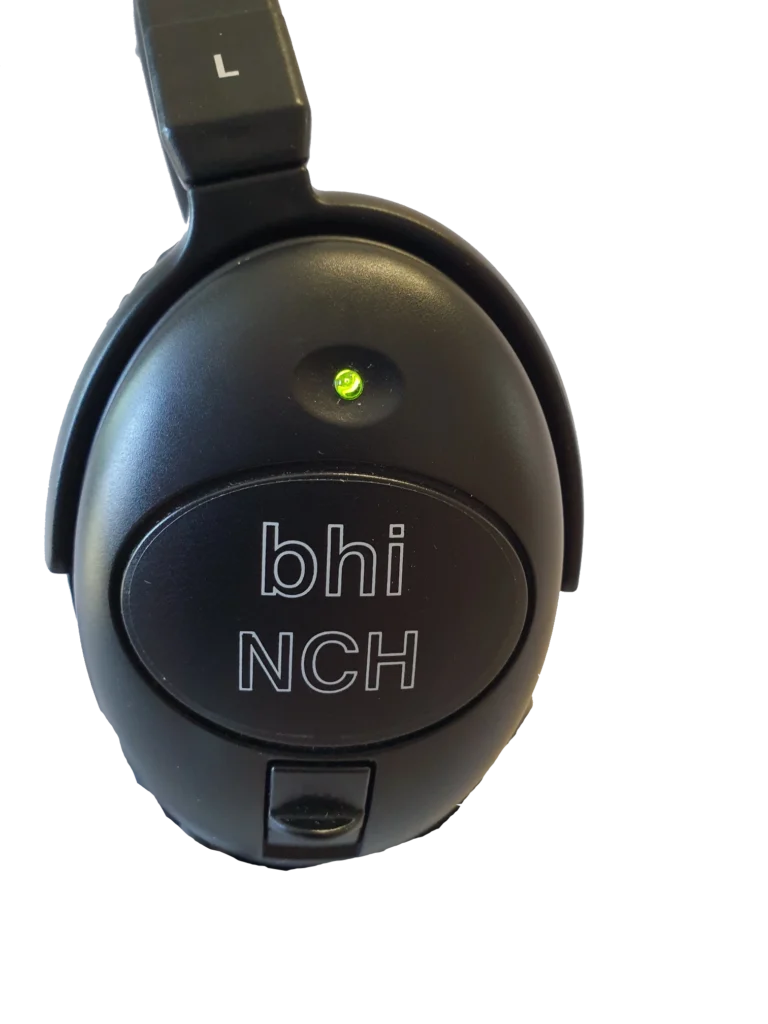By Jock Elliott, KB2GOM
As an oldster with a bit of hearing deficit, I am a big fan of anything that helps me to hear better when I am trying to tease out hard-to-hear signals, whether medium wave broadcast, shortwave broadcast, or single-sideband signals on the HF ham bands.
Toward that end, headphones help a lot. They deliver the audio signal directly into the ear canal while reducing distraction from external sounds. I had some inexpensive headphones from a big-box store, but I wondered if there were headphones that would be better suited for DXing.
So I contacted the folks at BHI to see if they had any headphones that would help with medium wave DXing. BHI is the British company that manufactures really effective noise cancelling products.
In response, the folks at BHI sent me their HP-1 Wired Stereo Headphones and their . . . NCH Active Noise Cancelling headphones . . . free of charge.
BHI describes the HP-1 Wired Stereo Headphones as “Comfortable Folding dynamic stereo headphones for Radio Communications,” and, in my view, they are just that. I found the HP-1 to be highly useful for medium wave and shortwave DXing. To my ear, they sound like they are biased toward high frequencies, with lower bass response than on the headphones I bought from the big-box store years ago. Because of the lower bass response, I find it easier to tease out faint signals on the airwaves, and the ear cups are comfortable for long-term listening. The cable is 1.9 m long and is terminated with an integral 3.5mm stereo jack plug. The HP-1 headphones are supplied with a 1/4″ stereo to 3.5mm stereo adapter.
The NCH Active Noise Cancelling headphones are a bit of a different beast: they are NOT designed to cancel noise on the broadcast signal you are listening to. Instead, they are designed to reduce external noise. According to the BHI website:
“The bhi NCH active noise cancelling headphones (ANC) do not work like our other DSP noise cancelling products but effectively reduce external ambient background noise enabling you to concentrate more and enjoy your listening experience when listening in a noisy environment. The over-ear style NCH headphones also give good passive audio isolation from external noise.”
These headphones are powered an AAA battery. There is a switch to turn the noise-cancellation circuity on and off, and there is an LED that lights when the unit is activated. The NCH headphones have a 1.25m detachable cable with 3.5mm jack plug (both ends).
So I tried out the NCH headphones while mowing the lawn with a gasoline-powered lawnmower and listening to an audio book on my digital recorder. Bottom line: they really work to significantly reduce (but not totally eliminate) an external noise source and make the listening experience more pleasant. And when they are not turned on, they work really well as ordinary headphones for DXing. Like the HP-1 headphones, they are comfortable and biased toward high frequency.
In the end, I found both these headphones worked well for their intended purpose, and I am happy to recommend them.





My NCHs were delivered today. Many thanks to Michael at DX Engineering for his graciousness in assisting with diagnosis of an existential problem with them – operator error.
Jock,thanks,once again well written.I have the dual in line DSP unit and I believe that you tested and have the compact, battery operated DSP.As you say they do work very well,not miracle workers with poor signals but get a lot of sky clutter out,most of the time.It sounds like the new earphones could possibly be plugged into our DSP units to filter out even more hash from ambient noise on our own turf.Thanks
Headphones are a popular topic among radio enthusiasts, for sure!
My favorite the last few years is the Sony WH-1000XM3 noise cancelling headphones (newer models are XM4 and XM5). The reduction of ambient noise is excellent, and I take full advantage of it to reduce the crashes of ocean waves when DXing at the Pacific Coast of Washington or Oregon. Likewise, if I’m in a group DXpedition the WH-1000XM3 helps lessen the distractions from other DXers in the room.
These upgrade pads from Dekoni Audio improve the XM3s even further in my opinion: https://dekoniaudio.com/product/choice-leather-ear-pads-for-sony-xm3-headphones/
If you dont have any hearing issues and are already in a low nosie environment, i reccomend the Sony MDR 7506 headphones. Very sturdy and two broadcast engineers who are also audio purists and picky, say they reproduce the frequencies used in AM and HF DXing quite well…. and they do. very comfy too.
Nice post Jock,
I’ve used over the ears headphones for many years. My latest is the Everyday Noise Canceling headphones by Raycon. They are decent headphones for the price. They are both Bluetooth and wired capable. I have also used in-ear Jabra Elite 75T which have noise canceling when I’m out in the yard and about town. But for comfort, I must prefer over the ears.
I have hearing issues when there is too much bass. Unfortunately, many headphones emphasize the bass. I have found that with the Raycon headphone when I switch on the ANC, a lot of the bass noise disappears and I can hear a clearer, slightly higher pitch in the audio. I think what is happening is that the ANC is eliminating a lot of the external bass rumble sounds in the room. Like the blower motor on the heating fan, the refrigerator motor, etc. Whether I’m using the Bluetooth or using wired, I can switch the ANC in/out which is nice.
Someone asked whether a Bluetooth transmitter hooked to a radio would cause interference. I often use a little TaoTronics TT-BA07 2-in-1 adapter. This can be switched to be either a transmitter or a receiver. I have found that using a 6″ 1/8 cable that I can use it with my radios without any additional noise being injected. If I lay the transmitter directly on the radio then I can get some noise. But overall it works great and means I can walk around the room without wires.
73
Bill WD9EQD
Smithville, NJ
Bill,
Too much bass . . . exactly. Lower (less) bass response is better for me as well.
Thanks for your comments and suggestions.
Cheers, Jock
Good advice, Jock. I can’t imagine DXing without a good set of earphones. A pair of GI surplus, high-impedance phones came with my crystal set, circa 1955. Since then, I have never been without a pair. For several years I have used Sennheiser HD 428s. I recently had to replace the earpads, as the material rots out after a while; otherwise, a great experience.
My elder son gifted me with a pair of Bose noise-canceling, Bluetooth phones a couple years ago. I can use these on my radios with a cord, but I’m not sure how much noise a Bluetooth transmitter would generate in the radio. Noise-cancelling is not necessary, if you can get to a quiet location. The Bose will virtually cancel a toilet flush at 10 feet. Hi-Hi.
Bob,
Thanks for your comments.
I once had a parrot that would imitate the sound of the toilet flushing (don’t ask) and would also whistle for the dogs, driving them nuts.
Cheers, Jock
Nice!
I have several of the bhi devices (not the head phones) and i am very happy with their amazing capabilities.
Frans,
Thanks! Yup, the BHI noise cancelling device I bought and tested really works.
Cheers, Jock